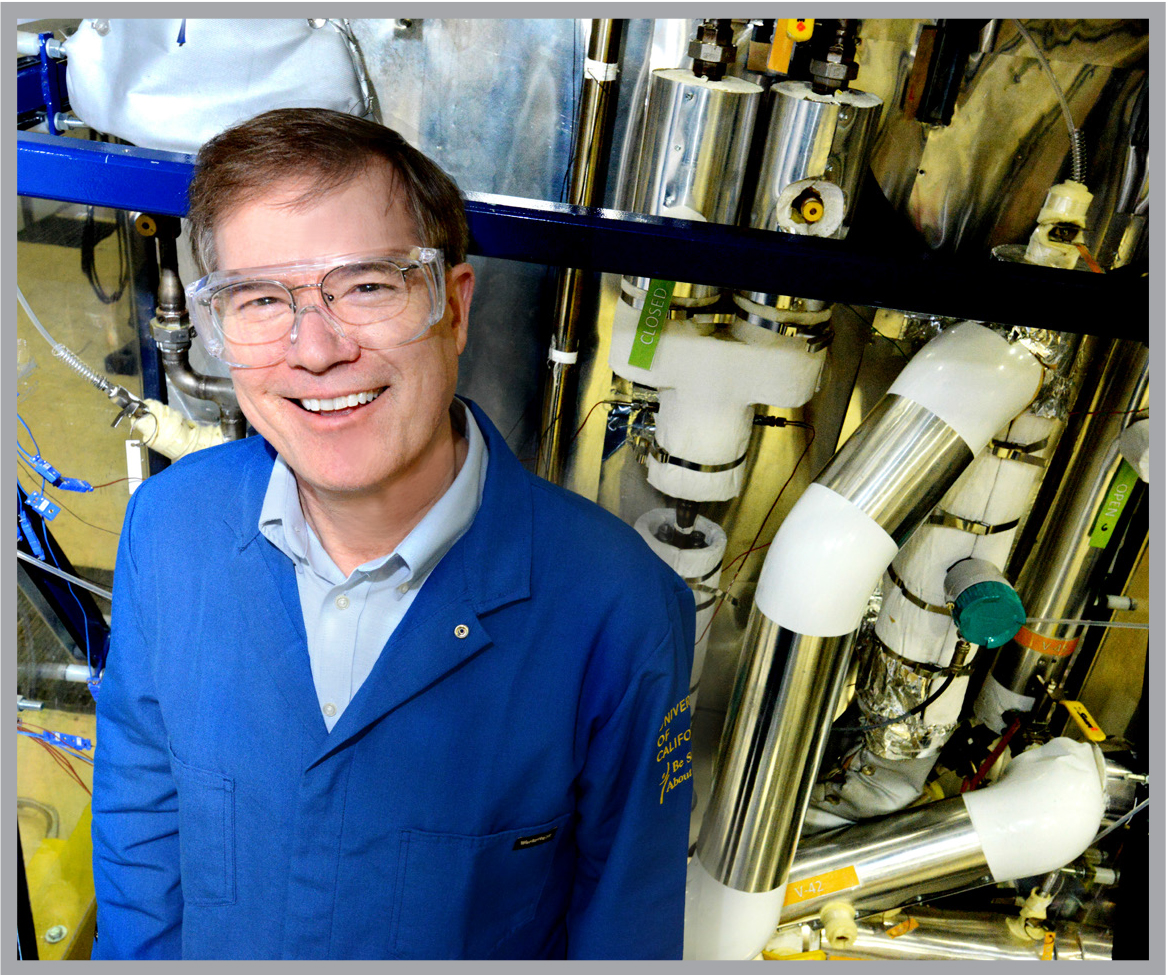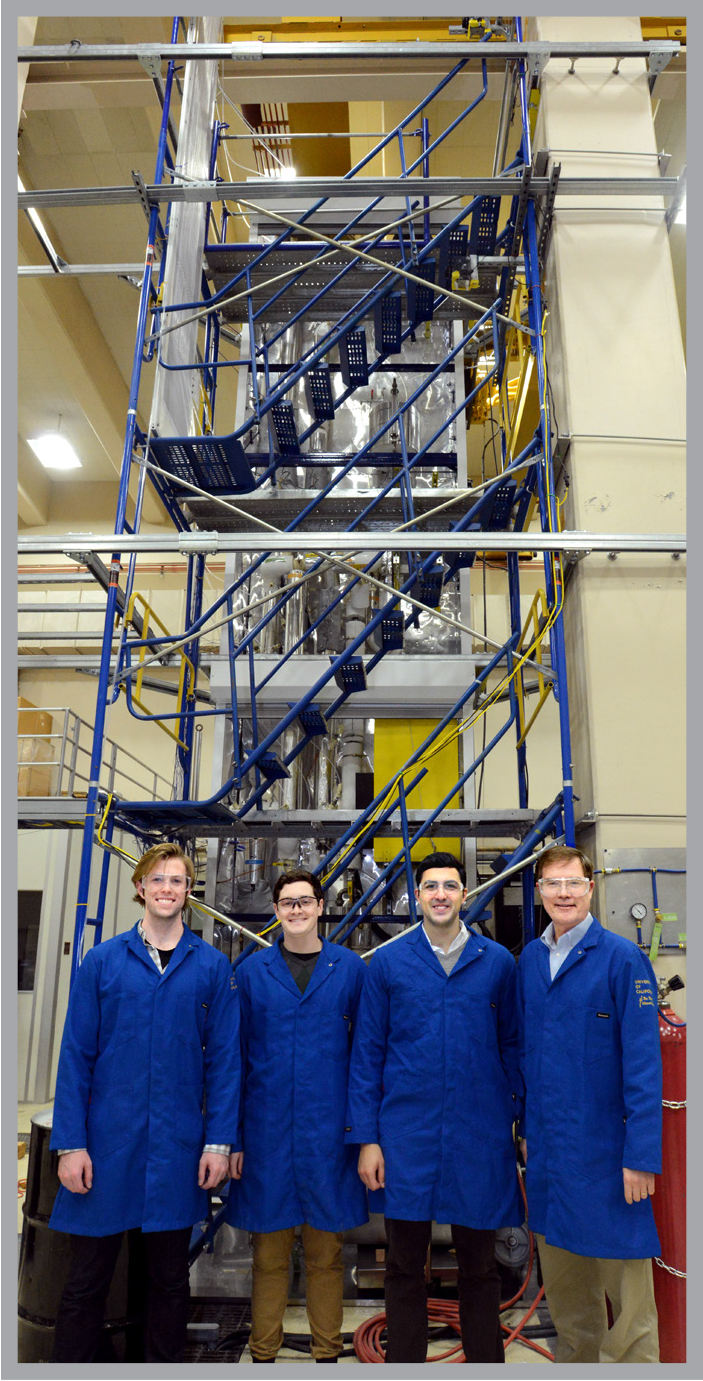An Energy Strategy that Can Take the Heat
At first, it sounds ominous: Molten salts, heated to 600 or even 900 °C (about 1,700°F, pumped through the pipes surrounding a nuclear reactor. But a molten salt mixture may make a smart substitute for water to extract heat from nuclear reactors — or thermal solar power plants — and deliver it to turbines to generate electricity.

Whatever material is used to transport heat energy from a reactor, the laws of thermodynamics dictate that much of the energy is lost when the heat is turned into electricity. When water is the heat transporter, most of the energy is lost — up the cooling tower in the form of steam.
Hotter temperatures would yield greater efficiency — a godsend in regions hungry for electrical power and threatened by a shrinking water supply. But the laws of physics also dictate that when water boils and becomes vapor, higher temperature means higher pressure.
As in a car radiator, rising water pressure can threaten the pipes that contain it. At only 310°C the pressure of water circulating inside the reactor becomes more than 100 times greater than our atmosphere’s pressure at the earth’s surface, requiring heavy and bulky piping systems.
“The high pressure of water creates major technical challenges and limitations,” says Per Peterson, professor of nuclear engineering. “Reaching higher temperatures, and making electricity more efficiently, requires new strategies.”
As one of its research priorities, CERC-WET aims to advance technologies to improve thermoelectric power generation while reducing the need for water in the process. Peterson leads this effort on the U.S. side. He has been working with his counterparts at the Shanghai Institute of Applied Physics to explore and refine technology to use molten salts in both nuclear and solar energy production.
Fluoride salts perform best for this purpose, he says. They melt at about 400°C but do not boil until they reach more than 1400°C.

Peterson and his Chinese colleagues focus on molten salts at about 600 to 800°C. Because the salts are nowhere near boiling at this temperature, pressure inside pipes remains low. Using molten salts to deliver heat at these temperatures can increase the efficiency of electricity production by 50 percent and reduce waste heat by half, Peterson says. Under these conditions, virtually no water would need to be consumed to make electricity.
The research is advancing rapidly. “We are spending a lot of time to see how you could couple the molten salt technology to existing nuclear reactors and to certain types of solar power plants.”
A solar power strategy now in use, called concentrated solar power, focuses hundreds of mirrors on a fairly small volume of water to provide the energy to produce electricity. The plants are usually built in areas with relatively little cloud cover. But by definition, this means areas with limited water.
“We build these concentrating solar plants in places like Barstow, California, where there is a lot of sun but water is scarce. The plants have low thermal efficiency. They lose a lot of water to cooling.” Heating molten salts instead of water would yield electricity much more efficiently.
Because most of the water consumption in conventional solar power plants occurs as water evaporates into the atmosphere, CERC-WET researchers are also studying technologies to reduce the water consumed by cooling. This includes hybrid cooling methods, where advanced coatings applied to heat exchange surfaces spread water efficiently for optimal cooling, and dry-cooling methods where air-flow is regulated to eliminate the need for water completely.
Molten salts won’t flow through power plant plumbing tomorrow, but Peterson thinks high-temperature molten salt technology can be demonstrated within a decade and become commercially available shortly after that, to boost clean-energy power production, save water and avert at least some of the looming resource crises.
_________
The Department of Energy recently selected UC Berkeley to lead a multi-million dollar US-China research consortium focused on the energy-water nexus. The US-China Clean Energy Research Center for Water-Energy Technologies (CERC-WET) focuses on new technologies to reduce industrial water use, yield hydroelectric power and treat water more efficiently. At the center of this $64M effort is DOE funding to Berkeley and its partners, and Chinese government funding to research institutions in that country. A similar effort already exists at Berkeley Lab focused on enhancing the energy efficiency of buildings. To learn more about CERC-WET, please visit their website at cercwet.berkeley.edu.
